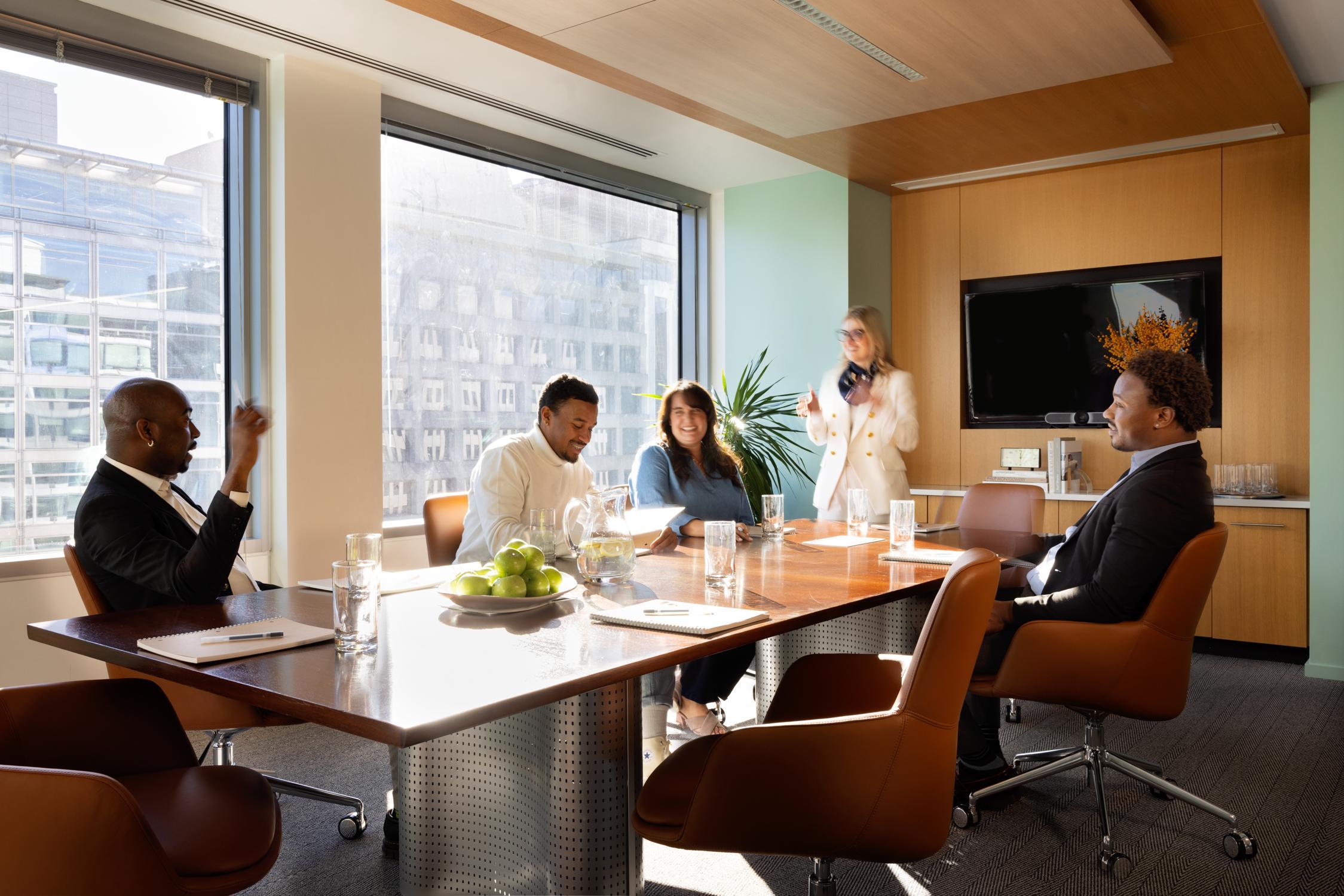
The Evolving Flex Space Landscape: Unpacking the Top 5 Trends in Coworking for 2023
What were the top trends that dominated the flex space landscape in 2023? What can we learn from these developments over the past 12 months? As the very way we view work continues to transform, the flex industry is leading the charge in the workplace evolution in 2024 and beyond.
Here, we’ll take a look at the 2023 takeaways from the flex field and discover how these developments are defining not only the commercial real estate and coworking industries, but the larger global economic and employment outlook.
1. WeWork Goes Bust: One of the major headlines of 2023 — and not just in commercial real estate and coworking — was the announcement of WeWork’s bankruptcy. Much ink has been spilled — and an Apple TV series launched — outlining the coworking pioneer’s downfall, further highlighting both the shakeup as well as the indelible role the name-brand company played in furthering the flex industry.
As we pointed out in a recent blog post, Preferred Office Network, which was founded the very same year as WeWork, sees this development as an opportunity for other flex space operators to receive enhanced exposure and increased traffic as the global demand for coworking options continues to grow.
2. The Rise of Remote Work Wanes: The return-to-office war has reached a stalemate, and what remains is hybrid. McKinsey found that, since the pandemic, approximately 90% of organizations have adopted a range of hybrid work arrangements that allow employees to clock in somewhere other than a traditional office.
To further highlight how far we’ve come in the hybrid work revolution: EY’s recent Future Workplace Index found that only 1% of companies now ask workers to spend one day or less in the office each week, down from 34% in 2022. Eighty percent of respondents reported requiring employees to be in the office three or more days a week.
What has changed in many cases is the location and the environment of that office. In today’s uncertain economic climate, many organizations across industries and size are reducing costs by opting out of their long-term office leases and incorporating flexible workplaces into their portfolios. JLL’s Future of Work Survey revealed that 43% of the firms plan to increase investment in flexible workspaces through 2025.
The move towards flex doesn’t just make financial sense for organizations, it meets the demands of workers who want more adaptability and the ability to build more work-life balance. Flexible workplaces are often closer to home than a company’s headquarters and offer more amenities and services to support employee productivity and engagement. In fact, six in 10 workers prefer hybrid work to fully remote or in-office arrangements, giving employers much to think about in constructing their RTO plans.
3. The Emergence of Managed Solutions: Bridging the gap between legacy office leases and flexible workplaces, managed solutions present companies with a more personalized workspace experience.
This creative model offers an appealing office alternative for larger companies seeking to reduce long-term obligations and overheads. In doing so, the industry has experienced significant growth and sparked a new managed solutions category, tailored to offer a more customized and branded workspace experience.
We introduced the Preferred Suites managed workspace solution this summer to provide our clients with the same flexibility and speed of transaction they have come to enjoy through our proprietary network of member centers. With Preferred Suites, Preferred Office Network leverages its exclusive coworking network to extend its flexible occupancy model in a product that delivers wins for landlords and tenants alike.
4. Technology Takes Over: As artificial intelligence and other technological advancements become a more commonplace presence in our everyday lives, business leaders must be at the forefront of the digital transformation going into the new year, ensuring their employees feel confident and comfortable using these new tools properly.
In the flex space, new technologies play a crucial role in shaping the coworking experience. Smart office solutions are gaining popularity, with coworking spaces incorporating advanced technologies to enhance productivity and streamline operations. From smart access control systems to IoT-enabled meeting rooms, technology is transforming coworking spaces into intelligent, user-friendly environments.
Coworking operators are investing in robust IT infrastructure to provide high-speed internet, collaborative tools, and digital amenities to improve the employee experience and the organizational output. Additionally, the integration of coworking management software facilitates seamless booking, resource management, and community building, creating a more efficient and connected workspace.
5. Sustainability Initiatives Become an Business Imperative: Another clear — but often overlooked — benefit of flexible workplaces over established offices? Traditional leased office spaces create 158% more emissions per occupier than flex space, according to research conducted by Instant and Incendium Consulting.
As many organizations look to align their operations with Environmental, Social, and Corporate Governance (ESG) criteria, implementing flexible workplaces in their operations can meet the expectations of a next-gen workforce and consumer base, strengthening talent management and market share.
The flex industry is meeting the moment, with many coworking operators adopting sustainable building designs, energy-efficient technologies, and eco-friendly practices such as recycling programs to reduce their environmental footprint. This trend reflects a broader societal shift towards responsible business practices, making sustainability a key consideration for both coworking operators and their members.
For operators to attract new occupiers, it will be critical to deliver greater transparency when it comes to sustainability protocols so that all parties can align their workspace strategies with environmental targets. New products and services help flex space operators track and report on their sustainability initiatives, delivering more transparency for occupiers to make informed decisions about their workspace footprint.
Forecasting the Future of Work
As we navigate the dynamic landscape of the flex space and commercial real estate industries in 2023 and into 2024, these trends highlight the innovation that defines this evolving space. The flex movement continues to revolutionize the way people work, fostering collaboration, flexibility, and community in an ever-changing professional landscape.
Preferred Office Network looks forward to being at the forefront of the future of flex, making it an exciting and transformative space for professionals around the globe.
